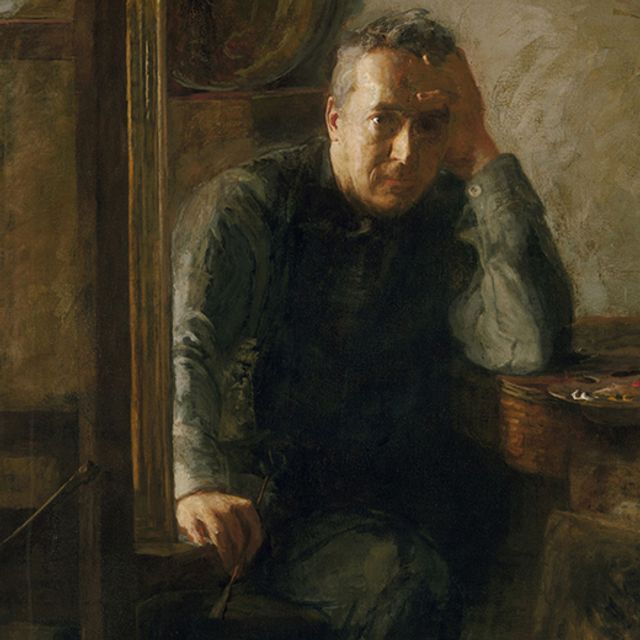Gallery 255
Main Building
Thomas Eakins’s Portrait of Dr. Samuel D. Gross (The Gross Clinic) is widely considered the greatest American painting ever made. At the time of its creation and for decades after, though, many deemed the work too gruesome for polite society: the incision in the thigh, the blood on the surgeons’ hands, the patient’s mother recoiling in horror. But even the squeamish critics couldn’t deny Eakins’s unparalleled mastery of composition, detail, and light and shadow.
Eakins painted The Gross Clinic for the city’s Centennial Exhibition of 1876, which drew ten million visitors. In 2007, 3,600 donors from all fifty states helped purchase the work so that it could remain in Philadelphia, to be exhibited for alternating three-year periods at the Philadelphia Museum of Art and at the Pennsylvania Academy of the Fine Arts, where Eakins studied and later taught.
Drop by and see this monumental local favorite, now returned to the museum.
Gallery 255
Main Building
Thomas Eakins, Philadelphia’s greatest artist, spent his lifetime painting the people and landscapes of his native city. From 1862 to 1866, Eakins, who had been a star pupil at the city’s prestigious Central High School, attended classes at the Pennsylvania Academy of the Fine Arts, where he developed a devotion to studying the human figure. He then traveled to Paris, where he studied at the École des Beaux-Arts from 1866 to 1869, returning to Philadelphia in 1870 after an extended visit to Spain. In 1876 he began to teach at the Pennsylvania Academy, where he soon became a professor. In 1882 he was appointed director, reforming the school’s curriculum to reflect his belief in the importance of the study of anatomy, the nude, perspective, and sculpture.
These principles, drawn in part from his experiences with contemporary French painting and the old masters, were applied to his own art in subjects from modern American life, particularly the local sports he loved best: boxing, hunting, sailing, and swimming. Painting sunlit scenes on the Schuylkill and Delaware Rivers, he captured the characteristic postures of athletes and fishermen with a complex method that included plein air sketching, figure study, perspective drawing, and photography. With the same rigor, he made portraits of his family and friends, as well as a wider circle of distinguished contemporaries, including the city’s artists, musicians, doctors, and professors. Sometimes unsparing and occasionally shocking, as in his monumental portrait of Dr. Samuel D. Gross, Eakins’s paintings earned a reputation for blunt realism and psychological insight.
Although his career was marred by scandals, mostly related to his use of nude models and his own obstinate behavior, Eakins lived to see his work hailed as definitively American. A decade after the artist’s death in 1916, his widow began conversations with Fiske Kimball, director of the Museum, to create a memorial gallery in the institution’s new building on Fairmount. Susan Macdowell Eakins’s many gifts to the museum in 1929 and 1930 established the most important collection of Thomas Eakins’s paintings, drawings, sculptures, and photographs in the world.

Portrait of Thomas Eakins (detail), c. 1920–25, by Susan Macdowell Eakins (American, 1851–1938), 1939-11-1
Kathleen A. Foster, The Robert L. McNeil, Jr., Senior Curator of American Art, and Director, Center for American Art
Check out the variety of events offered by this program, for members and the public alike.